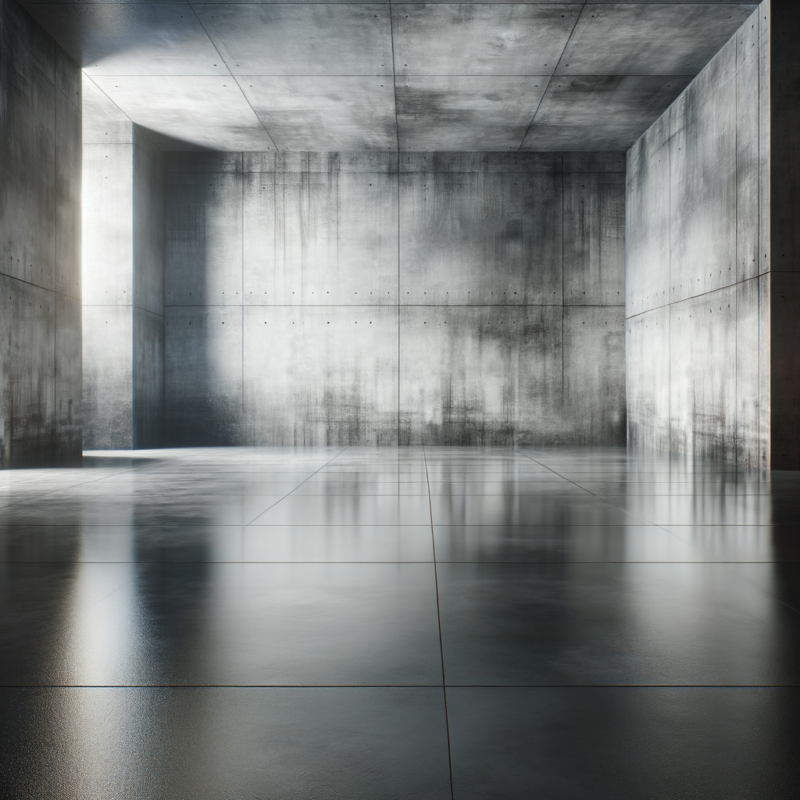When it comes to flooring options, concrete has become increasingly popular due to its versatility, durability, and modern aesthetic appeal. Among the various concrete flooring choices, two options often stand out: burnished concrete and polished concrete. In this article, we will compare these two flooring solutions, exploring their differences in appearance, durability, maintenance, cost, eco-friendliness, and suitability for different applications. By the end, you’ll have a clear understanding of which option might be the right fit for your needs.
What is Burnished Concrete?
Burnished concrete is a flooring option achieved by mechanically rubbing or polishing the concrete surface with specialized equipment. This process enhances the concrete’s strength and durability while producing a smooth, glossy finish. Burnished concrete is a popular choice for both residential and commercial spaces, providing a unique blend of aesthetic appeal and longevity.
What is Polished Concrete?
Polished concrete, on the other hand, involves a more extensive process of grinding and polishing the concrete surface to achieve a high-gloss finish. This method enhances the concrete’s natural beauty, revealing aggregate and creating a mirror-like shine. Polished concrete has gained popularity for its elegant appearance and is often used in upscale residential and commercial projects.
Appearance and Aesthetics
Shine and Gloss
Burnished concrete typically offers a moderate level of shine and gloss. It is less reflective than polished concrete but still provides an attractive, sleek appearance. In contrast, polished concrete Melbourne price offers a stunning high-gloss finish that can mimic the look of natural stone. The choice between the two often comes down to personal preference and the desired level of reflectivity.
Color Options
Both burnished and polished concrete floors offer various color options. Burnished concrete can be stained or dyed to achieve a range of colors and patterns. Polished concrete also allows for color customization, and the grinding process can reveal the unique characteristics of aggregates, creating a distinctive appearance.
Durability and Longevity
Concrete, in general, is known for its durability, and both burnished and polished concrete floors share this trait. However, polished concrete tends to be slightly more durable due to the extensive grinding process, which densifies the surface, making it resistant to abrasion and wear. Both options can last for decades when properly maintained.
Maintenance and Cleaning
Daily Maintenance
Burnished concrete is relatively low-maintenance and easy to clean. Regular sweeping and occasional mopping are usually sufficient to keep it looking its best. Polished concrete, although more resistant to staining, may require slightly more effort to maintain its high-gloss appearance.
Periodic Maintenance
Both flooring options may require periodic resealing or re-polishing to maintain their shine and durability. The frequency of maintenance depends on factors such as traffic, usage, and environmental conditions.
Cost Comparison
Installation Costs
Burnished concrete tends to be more cost-effective initially, making it an attractive choice for budget-conscious projects. Polished concrete, with its extensive grinding process, can be more expensive to install. However, the long-term costs should also be considered.
Long-term Costs
Polished concrete often requires less maintenance and resealing over time, potentially offsetting the higher initial installation cost. Burnished concrete may incur more frequent maintenance expenses but is generally more budget-friendly upfront.
Eco-Friendliness
Both burnished and polished concrete floors are eco-friendly choices. They utilize existing concrete slabs, reducing the need for additional materials. Additionally, their durability and low maintenance requirements contribute to sustainability by reducing waste and energy consumption.
Application Areas
Residential Spaces
Burnished concrete is a practical choice for residential areas such as living rooms, kitchens, and basements. Its moderate shine and cost-effectiveness make it a popular option. Polished concrete can be an excellent choice for upscale homes where a high-gloss finish is desired, often seen in living rooms and bedrooms.
Commercial Spaces
In commercial settings like offices, retail stores, and restaurants, both options have their merits. Burnished concrete provides durability and a sleek appearance, while polished concrete adds a touch of elegance, making it suitable for high-end establishments.
Conclusion
In the debate between burnished concrete and polished concrete floors, the choice ultimately comes down to your specific preferences, budget, and the intended use of the space. Burnished concrete offers an attractive yet budget-friendly option, while polished concrete delivers a luxurious high-gloss finish. Consider your priorities for appearance, maintenance, and cost to determine which flooring solution best suits your needs.
